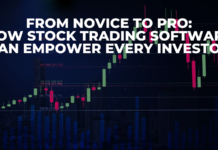Last Updated on July 14, 2024 by Asfa Rasheed
Active investing is a trading method where the objective is usually to outperform average index returns through frequent trading. That’s presumably what comes to mind when you picture Wall Street traders, but these days you can do it from the convenience of your smartphone with applications like Robinhood.
With actively managed mutual funds and actively traded exchange-traded funds (ETFs), you have the option of handling active investing yourself or hiring experts to handle it for you. You may get a ready-made portfolio with hundreds of assets from them.
From quantitative and qualitative information about individual stocks to more general market and economic trends, active fund managers evaluate a multitude of data on each investment in their portfolios. Managers use such data to make purchases and sales of assets in order to profit from momentary price changes and maintain the fund’s asset allocation.
One of the benefits of active investing is its flexibility in erratic markets. In order to avoid catastrophic losses, an active investor may choose to switch to defensive assets like cash or government bonds during bear markets, according to Brian Stivers, an investment consultant and the founder of Knoxville, Tennessee’s Stivers Financial Services. Investors can also reallocate to hold more stocks in expanding markets in a similar manner.
They might outperform market indexes such as the S&P 500, at least in the near run, by reacting to real-time market circumstances.
Active investors can generate profits that raise their chances of outperforming market indices by using trading techniques like shorting stocks or hedging with options. However, they may also significantly raise the expenses and hazards related to active investing, therefore it is best to leave these strategies to experts and very seasoned investors.
Active investing can be used by an astute portfolio manager or financial adviser to make trades that reduce profits for taxation.
We refer to this as harvesting tax losses. Although tax-loss harvesting can be utilized in conjunction with passive investing, active investment strategies involve more trading, which may lead to more opportunities and facilitate avoiding the wash-sale rule.
Expenses associated with active investing are higher. Most brokerages don’t impose trading fees for run-of-the-mill purchases of stocks and ETFs these days. However, more complex trading techniques that rely on derivatives could come with costs. Because of the research and volume of transactions needed, actively managed funds have quite high cost ratios, averaging 0.71% as of 2020.
Active investors have a lot to gain when they are correct. However, if one investment does not perform as expected, it can negatively impact portfolio performance and result in huge losses, particularly if margin or borrowed funds were utilized to place the investment.
Purchasing and holding assets over time is the main goal of the passive investment method. It’s best explained as a hands-off strategy: you select a security and then, with an eye on a longer-term objective like retirement, you hang on through ups and downs.
Passive investing techniques often entail buying shares of index funds or exchange-traded funds (ETFs) that replicate the performance of key market indexes, such as the Nasdaq Composite or S&P 500, whereas active investment typically focuses on individual stocks. Shares of these funds may be purchased through any brokerage account, or you can purchase them through a robo-advisor.
Passive investing doesn’t require daily attention because it’s a set-it-and-forget-it strategy that just tries to mimic market performance. This results in much fewer transactions and expenses, particularly when money is involved. Financial experts like it for retirement savings and other investing objectives because of this.
The Benefits of Investment Passivity
For individual investors, the lower trading volumes linked to passive investing may result in cheaper expenses. Furthermore, because there is less maintenance and research needed, passively managed funds have lower expense ratios than the majority of active funds. 2020 saw an average cost ratio of 0.06% for passive mutual funds and 0.18% for passive exchange-traded funds.
Technical analysis tool are often more fund-focused, you’re usually making hundreds or even thousands of stock and bond purchases. This makes diversification simple and lessens the chance that a single bad investment could wipe out your whole portfolio. If you are handling your own active investing and you are not properly diversified, a single poor investment has the potential to completely erase your winnings.
With passive investment, you get what you see. As a matter of fact, your fund’s name frequently refers to the index it monitors, and it never holds investments that aren’t included in that index. Conversely, not all actively managed funds offer this degree of openness; a lot is left up to the manager’s judgment, and some strategies could even be kept secret.
All passive funds nearly usually yield superior returns if you’re investing for the long term. Approximately 90% of index funds tracking businesses of all sizes beat their active equivalents during a 20-year period. According to the most recent S&P Indices Versus Active (SPIVA) report from S&P Dow Jones Indices, over half did so even over a three-year period.
Preserving Wealth
Active investment techniques may be advantageous for investors that prioritize asset preservation above growth, according to Stivers. An active approach, for instance, can be beneficial to a person nearing retirement who doesn’t have the time to recuperate from significant losses or who prefers to create a reliable income stream over achieving consistent long-term financial gains.
During a bull market, investors who own both active and passive assets might employ active portfolios as a buffer against downturns in a passively managed portfolio. An investor can also benefit from a combination approach by having the assurance that their active, short-term strategy (such as a taxable brokerage account) allows them to investigate trends without endangering their long-term objectives, while their passive, long-term strategy (such as their retirement funds) is managed automatically.






















